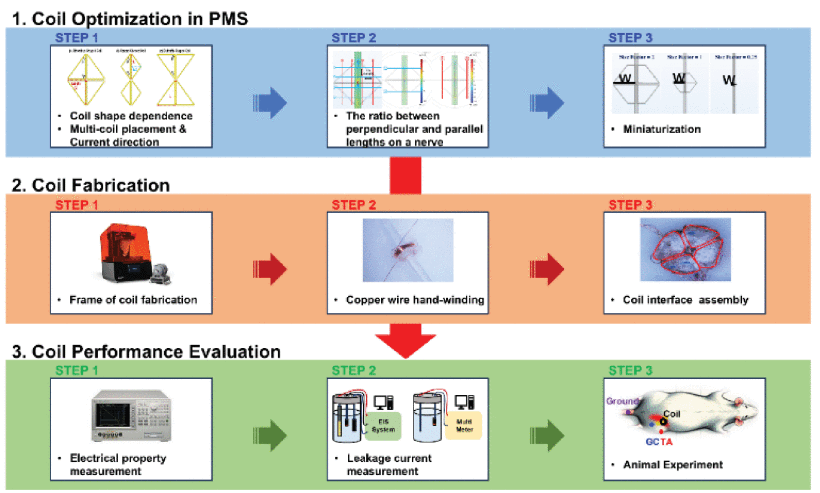A team at the Daegu Gyeongbuk Institute of Science and Technology (DGIST) has introduced a novel coil design that significantly improves the efficiency and safety of peripheral magnetic stimulation (PMS). This technology allows nerves to be stimulated using magnetic fields without requiring direct contact with the skin or nerve tissue, addressing key limitations of existing non-invasive and invasive nerve stimulation methods.
Peripheral nerve disorders such as chronic pain, carpal tunnel syndrome, and facial nerve paralysis are typically treated using either implanted electrodes or surface electrical stimulation. However, implanted devices are invasive and can trigger immune responses that lead to scar tissue formation, reducing long-term effectiveness. Surface stimulation, while non-invasive, often suffers from poor selectivity, skin irritation, and current leakage.
To overcome these challenges, the DGIST team focused on optimizing the spatial gradient of magnetic fields, which is critical for effective nerve activation. Through simulation studies, they discovered that a four-leaf diamond-shaped coil design produced stronger and more focused magnetic fields compared to traditional coil geometries of the same size. This design enabled more efficient nerve stimulation with lower energy consumption.
The team fabricated an ultra-compact version of the coil using 3D printing and copper wiring. In animal tests, the device demonstrated stable performance, with minimal heat generation—only a 1 to 1.7°C increase in surface temperature during stimulation—ensuring safety for biological tissues.
Another key finding was that longer rise times in the stimulation signal led to stronger nerve responses. This insight suggests that not only the strength but also the duration of magnetic exposure plays a crucial role in effective nerve activation. This could guide future improvements in non-contact stimulation protocols.
The implications of this research are broad. The technology could be applied to chronic pain management, neural rehabilitation, selective nerve blocking, and mapping neural responses. It also opens the door to wearable or implantable devices that provide targeted therapy without the drawbacks of current methods.
Press Release: DGIST team led by professor Sanghoon Lee develops next-generation coil interface for non-contact peripheral nerve stimulation
Abstract in IEEE Transactions on Neural Systems and Rehabilitation Engineering: Optimized Coil Design for Enhanced Electric Field Induction in Peripheral Nerve Stimulation

